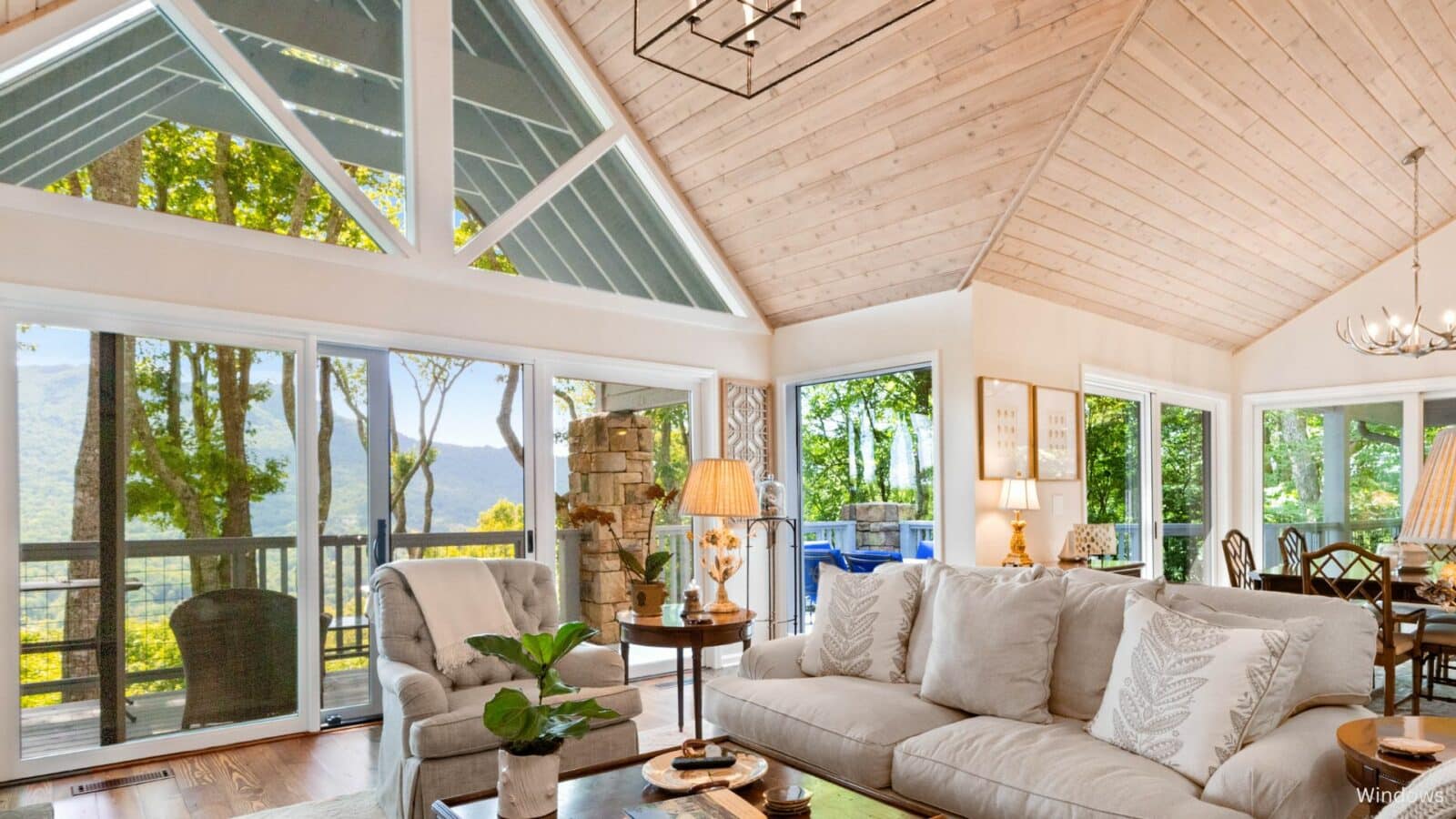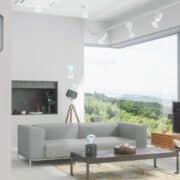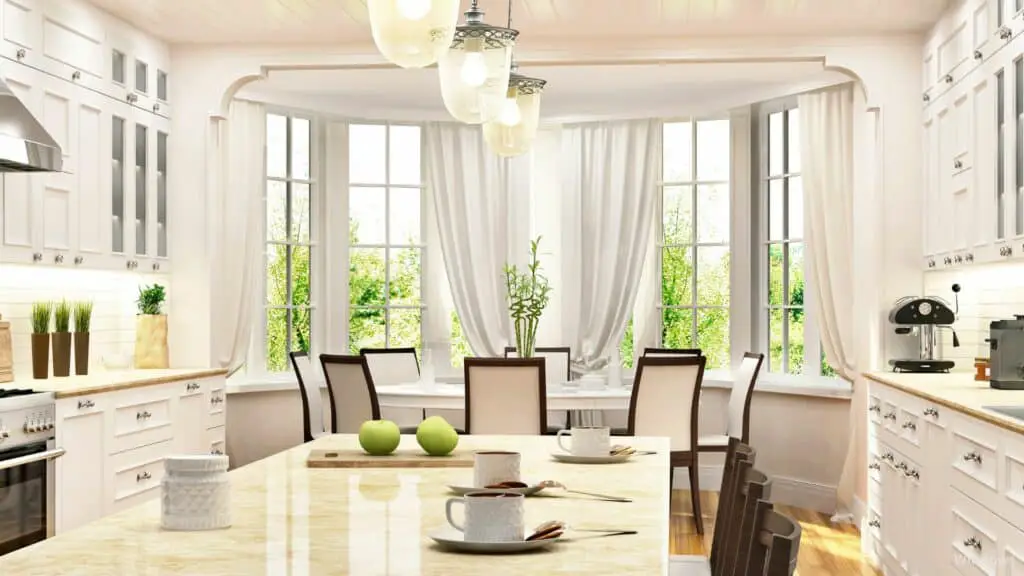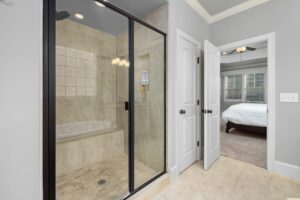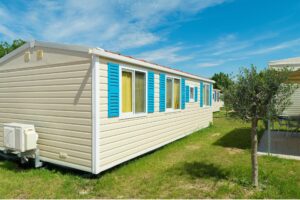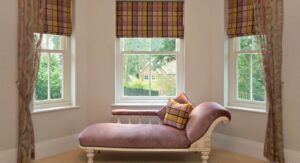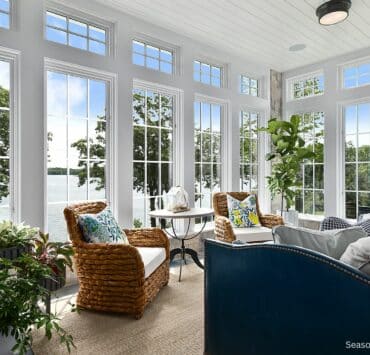Natural light is highly valued in homes and making a strategic choice in window selection can significantly boost your return on investment. Whether you’re building anew or remodeling, opt for window types that align with your needs for light, functionality, and budget.
Window Styles
Bay Windows
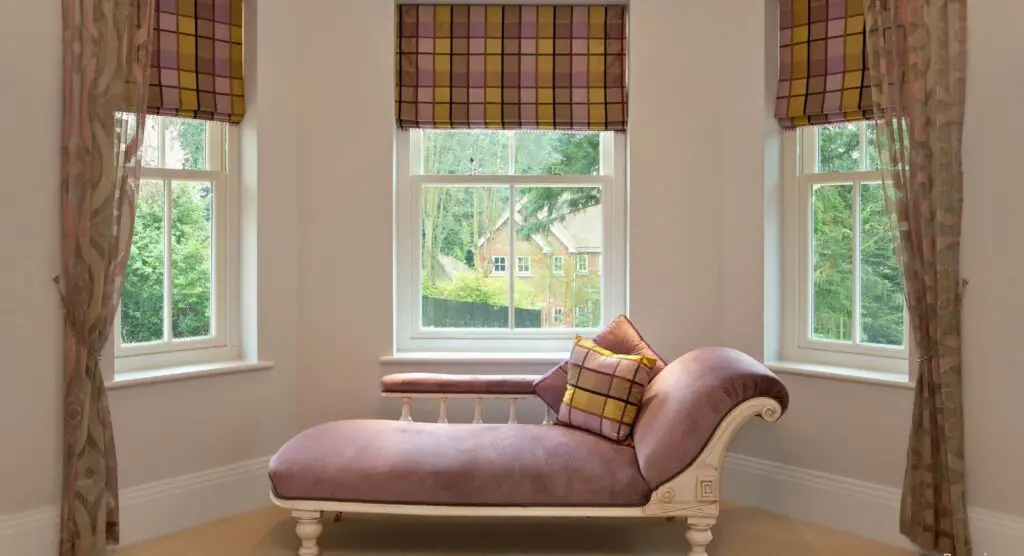
A bay window is an architectural feature that extends outward from the main walls of a building, creating a bay in the room. This structure usually consists of multiple windows joined to form an arc, allowing more natural light and offering wider views. Often found in living rooms and bedrooms, bay windows not only enhance a home’s aesthetic appeal but also provide additional space for seating or decoration.
Gable Windows
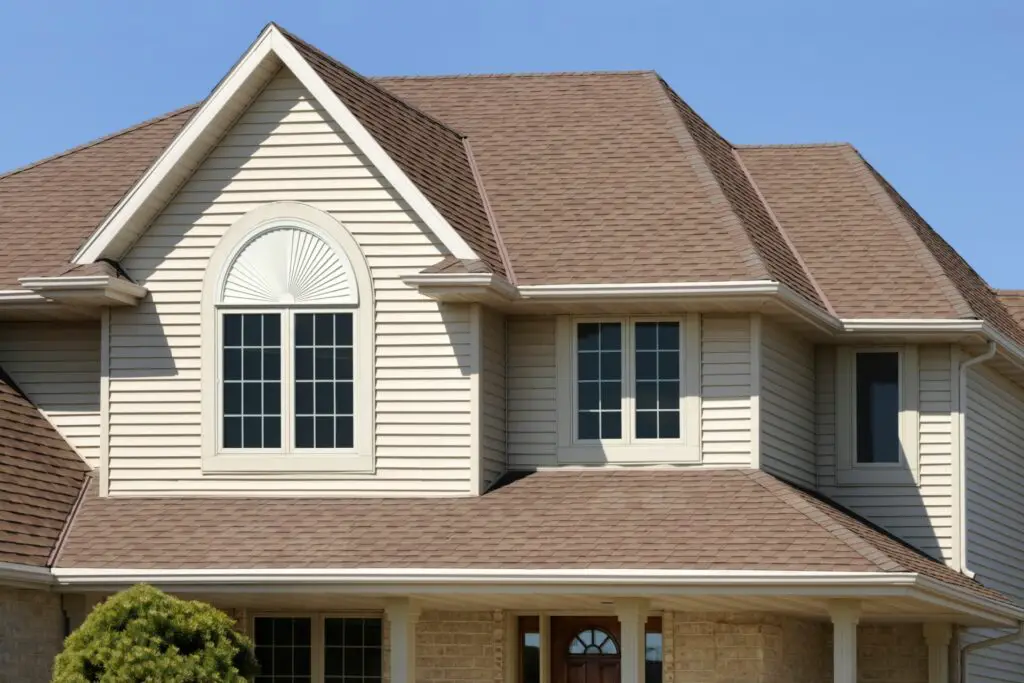
Gable windows are uniquely designed windows that grace the triangular portion of a wall within a gable-end roof. They not only add an architectural flair to your home but also provide natural light and ventilation.
Egress Windows
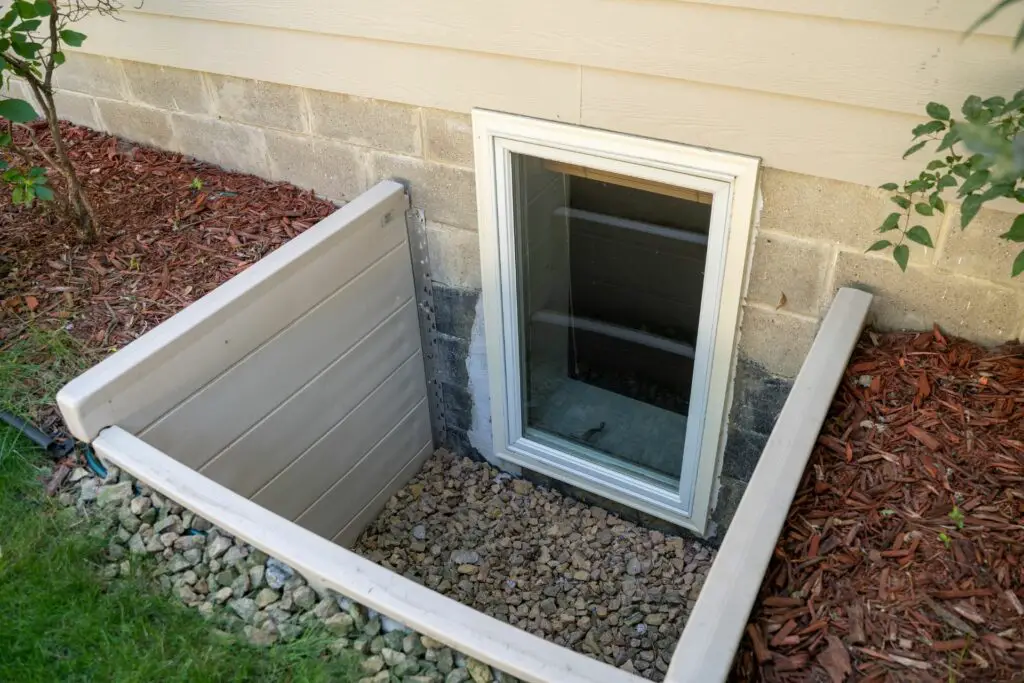
An egress window is a type of window that is installed in the basement of a building to provide an emergency exit in the event of a fire or other emergency. These windows typically have a wider opening than normal windows and are designed to allow for easy escape from the basement. They are typically installed below ground level and are equipped with a window well and a ladder or steps to provide access to the outside.
Farmhouse Windows
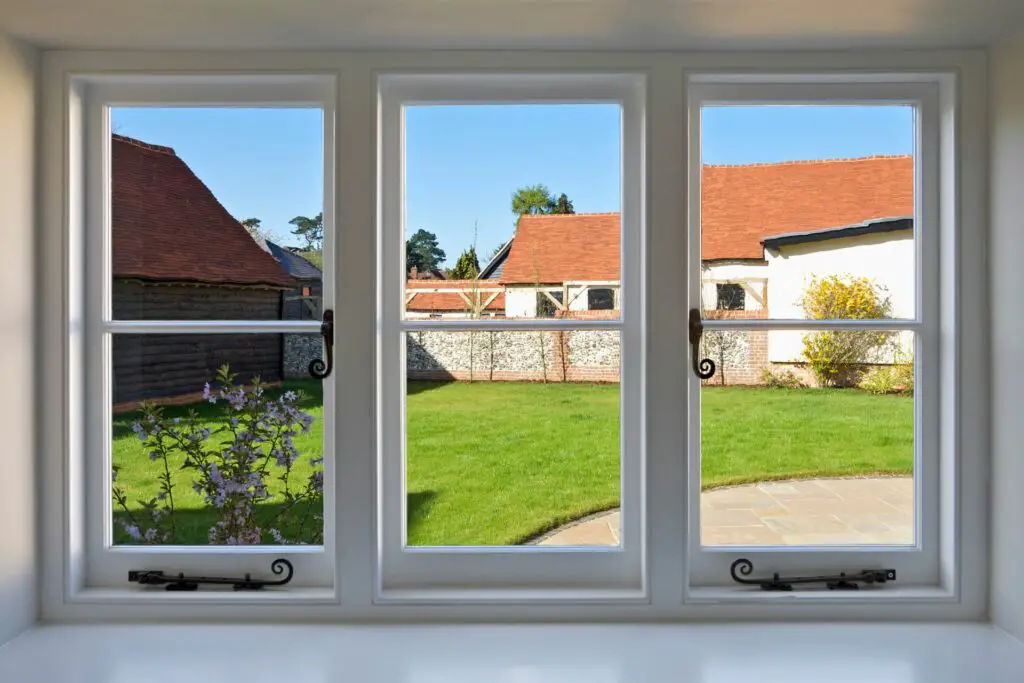
Farmhouse windows typically feature a rustic, charming style with multiple panes divided by grilles or muntins, often framed in a plain or elaborate style. These windows are usually double-hung, allowing both upper and lower sashes to move up and down, enhancing both the functionality and aesthetic of traditional farmhouse architecture.
Arch Window
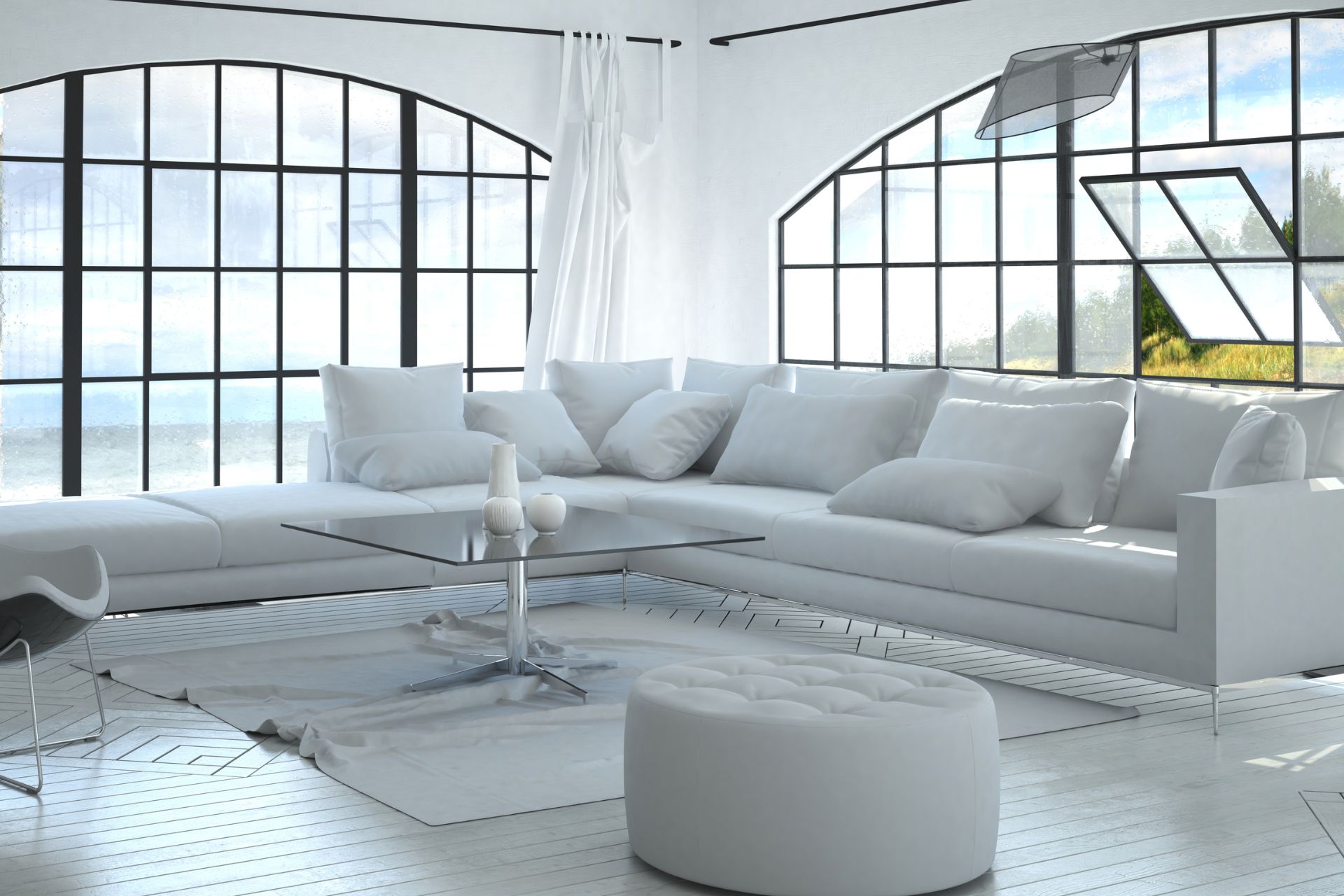
An arch window features a rounded top that adds an elegant, curved shape to the window design, making it a distinctive architectural element. This style of window not only enhances the visual appeal of a building but also allows more natural light to enter, brightening the interior spaces.
Bow Windows
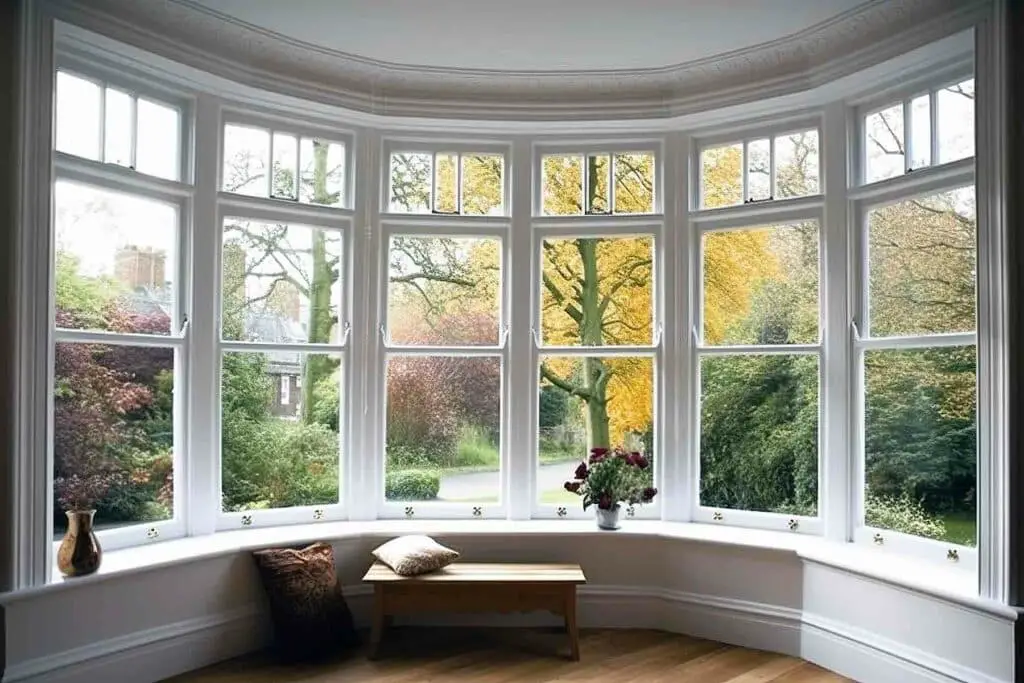
Bow windows are architectural elements that project beyond the exterior wall of a building, forming a curved structure made up of four or more window units. This design allows for more natural light to enter a room and creates additional space inside. The curved shape of bow windows adds significant aesthetic value to a home’s exterior and enhances views from the interior.
Mullioned or Mulled Windows

Mulled windows are a type of window design where two or more individual window units are joined together to form a single, large window opening. This process of joining multiple window units is known as window mulling, and the resulting window is referred to as a mulled window.
Enhancing Curb Appeal with Exterior Windows
Exterior windows can make a house look better and more welcoming by matching well with the house’s design and letting in more natural light. They can also add special touches to the house’s front look, which can make the house stand out and potentially increase its value.
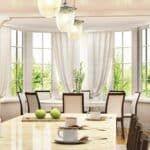
Specific Room Windows
Kitchen Windows
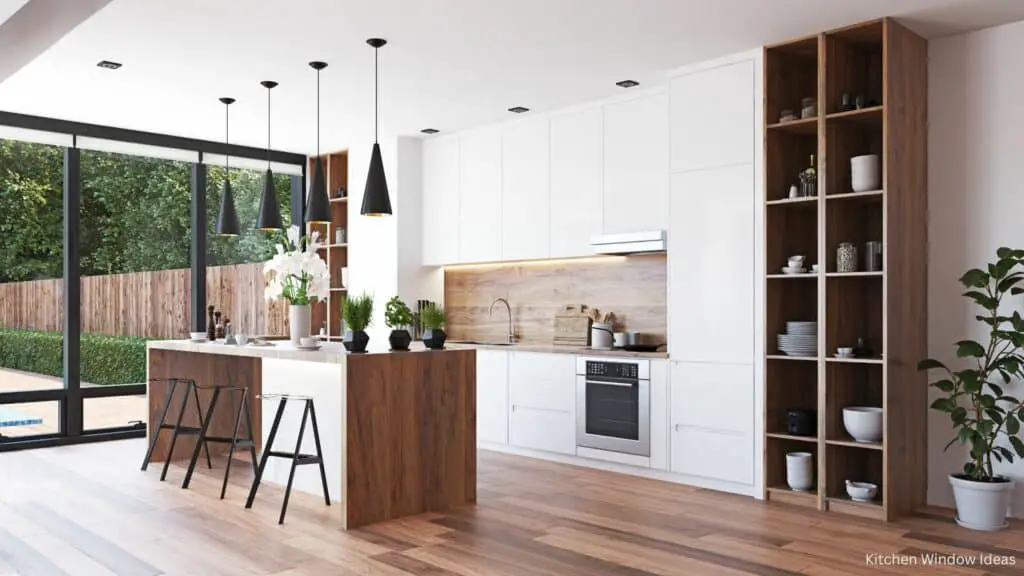
Kitchen windows are essential for bringing natural light into the cooking space and providing ventilation to clear out cooking odors and steam. They also add to the kitchen’s aesthetic appeal, often serving as a focal point or offering pleasant views to enhance the cooking experience. Properly designed kitchen windows can make the kitchen feel more spacious and welcoming.
Bathroom Windows
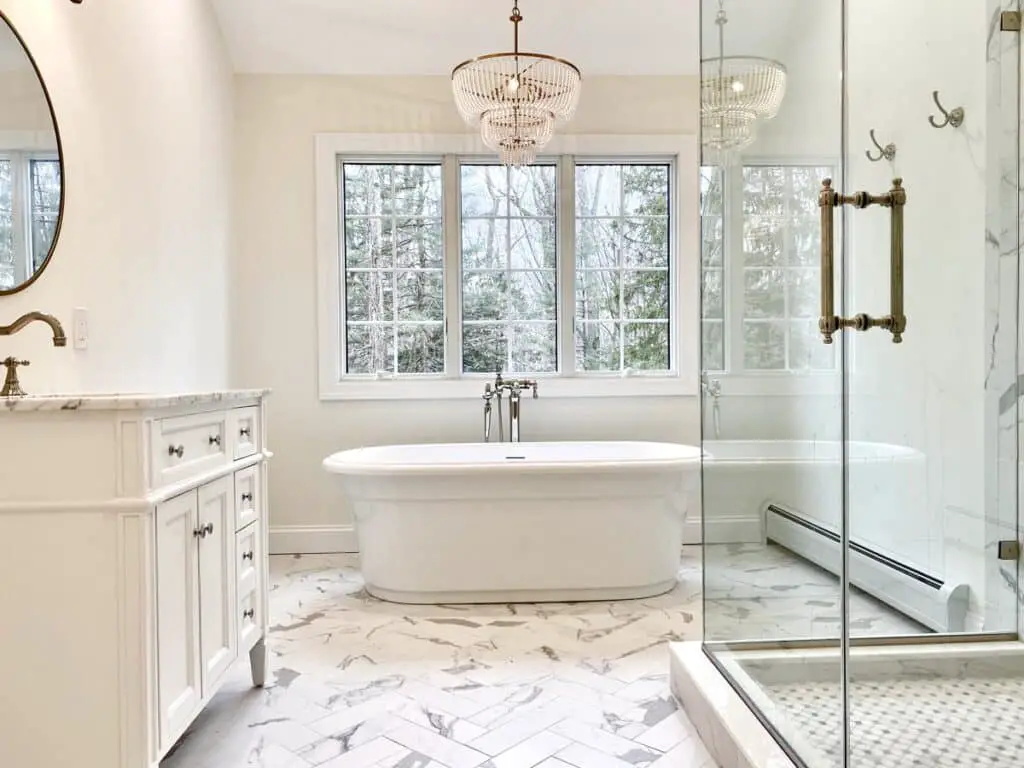
Bathroom windows play a crucial role in providing privacy while also allowing natural light to enter the space. They often feature frosted or textured glass to maintain privacy, especially in bathrooms that face public areas. Proper placement and the use of appropriate window treatments can enhance both the functionality and aesthetics of bathroom windows.
Basement Windows
Basement windows are crucial for providing natural light and ventilation in lower-level spaces, often limited by their underground location. They are typically smaller and placed higher on walls to maximize privacy and security while still allowing for emergency egress as required by building codes. Properly designed basement windows can enhance both the usability and safety of these often overlooked spaces.
Bedroom Windows
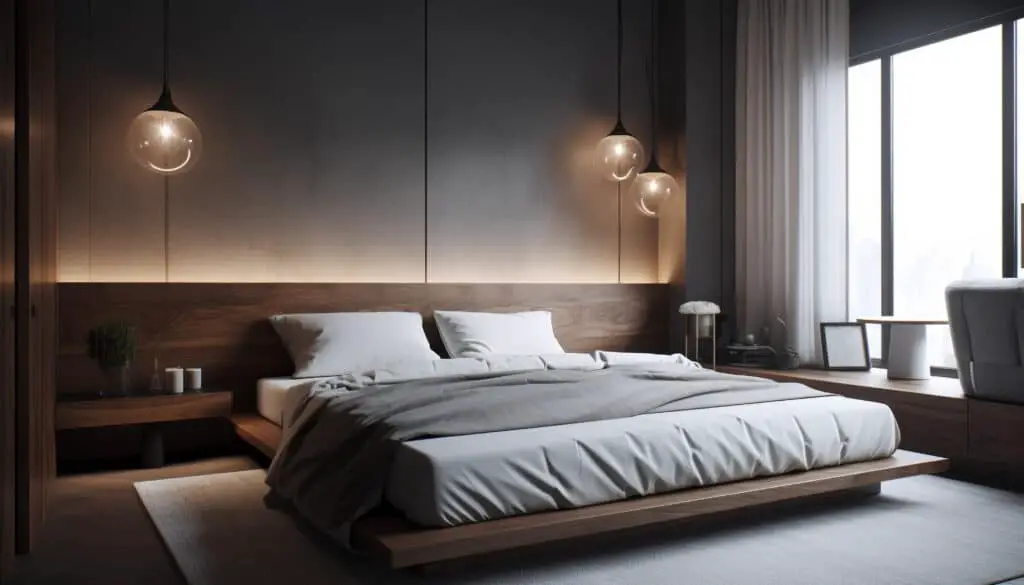
For optimal placement and style in bedroom windows, consider positioning them where they can provide both natural light and air circulation without compromising privacy. Choose styles that complement the overall decor, such as casement windows for ease of use or double-hung windows for traditional appeal. Properly placed and styled windows can significantly enhance both the comfort and functionality of a bedroom, making it a more pleasant and restful space.
Window Installation and Upgrade Cost
The expenses can vary widely depending on several factors including the choice of materials, the complexity of the installation, and the type and features of the windows selected.
Installation Cost
Generally, homeowners can expect to pay between $100 to $300 per window for installation, with window units costing between $200 to $800 each. Special features like smart technology or specialized glass can increase these costs.
Remodeling Cost
Remodeling existing windows starts at around $100 per window for basic updates. More extensive modifications, such as adding thermal coatings or double glazing, can significantly increase the cost.
Replacement Cost
Replacing windows typically costs between $300 to $1,200 per window, depending on materials and features like energy efficiency or custom designs. Total costs including labor can average $500 to $1,500 per window. Factors influencing cost include the window size, style, material, and any additional features like energy-efficient upgrades.
Repair Cost
Repair costs for windows vary depending on the damage. Simple fixes, like weather stripping, might cost as little as $5 to $10 per window. More involved repairs, such as replacing damaged frames or glass, can run from $100 to $1,000.

Window Treatment

Window Treatment Ideas
- Elegant Curtains: Choose from luxurious floor-length drapes in rich fabrics like velvet, light and airy sheer curtains, or vibrant patterned curtains to add personality.
- Chic Blinds: Opt for sleek Venetian blinds in wood or aluminum, minimalist roller blinds in various colors, or elegant Roman blinds that create soft pleats when raised.
- Layered Look: Combine sheer curtains with roller blinds for elegance and functionality, or pair floor-length drapes with Venetian blinds for a luxurious, timeless appeal.
- Window Valances: Add decorative accents like scalloped, box pleats, or ruffled valances to complement your curtains or blinds and enhance the room’s character.
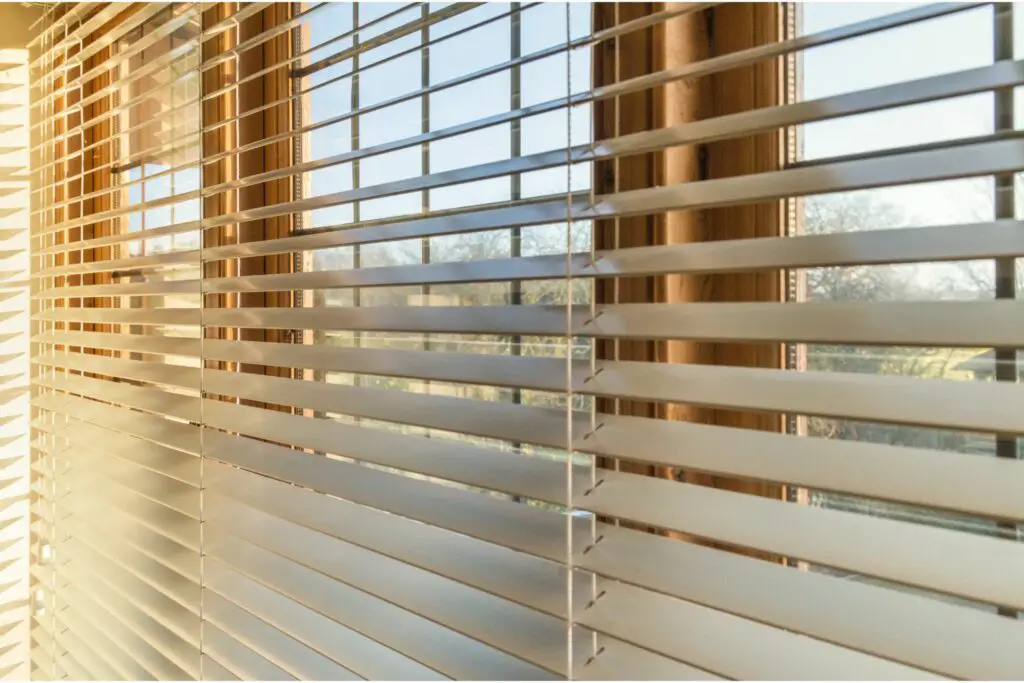
Living Room Window Treatments
- Curtains and Drapes: Choose between lighter curtains for a casual look or heavier drapes for better privacy and light control.
- Blinds and Shades: Available in materials like wood, faux wood, and fabric, these offer adjustable light control.
- Shutters: Provide a clean, classic look while offering excellent light control and privacy.
- Combining Treatments: Layer different treatments such as blinds with curtains for both functionality and style.
How to Dress a Window Without Curtains
- Blinds: A popular choice that allows adjustable light control, available in various materials like wood and aluminum.
- Shutters: Provide privacy and light control while adding visual interest. Available in styles such as plantation and traditional.
- Window Film: Offers privacy and reduces glare with designs like frosted or decorative.
- Sheer Panels: Lightweight and provide some privacy while adding texture and visual interest to a room.
Advances in Window Technologies: Enhancing Comfort, Efficiency, and Control
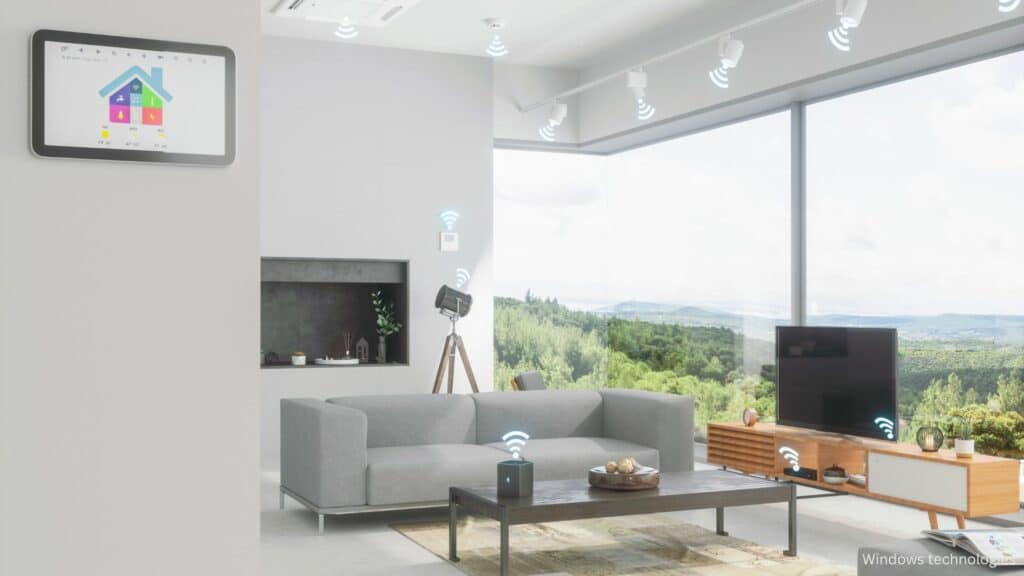
Recent innovations in interior window technologies have revolutionized how we interact with the spaces we inhabit, focusing on maximizing energy efficiency, reducing noise pollution, and integrating smart technology for superior comfort and control.
Smart and Responsive Windows
Smart windows have emerged as a game-changer in the realm of interior design and functionality. These windows can adjust their transparency or color based on external conditions:
- Electrochromic Windows: Utilizing an electric voltage, these windows change their tint to control the amount of light and heat entering a space. Continuous improvements are making these windows more responsive and durable.
- Thermochromic Windows: Employing materials like vanadium dioxide, these windows automatically adjust their transparency based on temperature, effectively controlling solar heat gain.
- Photovoltaic Windows: These innovative windows go a step further by converting sunlight into electricity, using advanced materials such as perovskites that also adapt their properties in response to temperature changes.
Enhanced Soundproofing and Energy Efficiency
Advancements in soundproofing technologies such as the use of acoustic caulk and multi-pane glass systems have significantly improved the ability to dampen external noise, creating quieter, more serene indoor environments. In terms of energy efficiency:
- Multi-pane Insulation: Windows designed with double or triple-pane glass filled with inert gases like krypton or argon dramatically enhance thermal insulation.
- Low-Emissivity Coatings: These coatings are applied to glass to reflect infrared light, which helps maintain internal temperatures—warmer in the winter and cooler in the summer.
- Advanced Materials: The development of nanoparticles and dynamic materials further boosts the thermal efficiency of windows, reducing energy consumption and costs.
Automation and Integration
Smart windows are now equipped with automated systems like Amazon Alexa that adjust based on various factors such as time of day, weather conditions, or indoor temperature settings. Integrated with home automation systems, these windows optimize energy use while adapting to individual preferences for comfort and privacy.
Window Maintenance and Care
Cleaning and Care
How to Clean Vinyl Windows
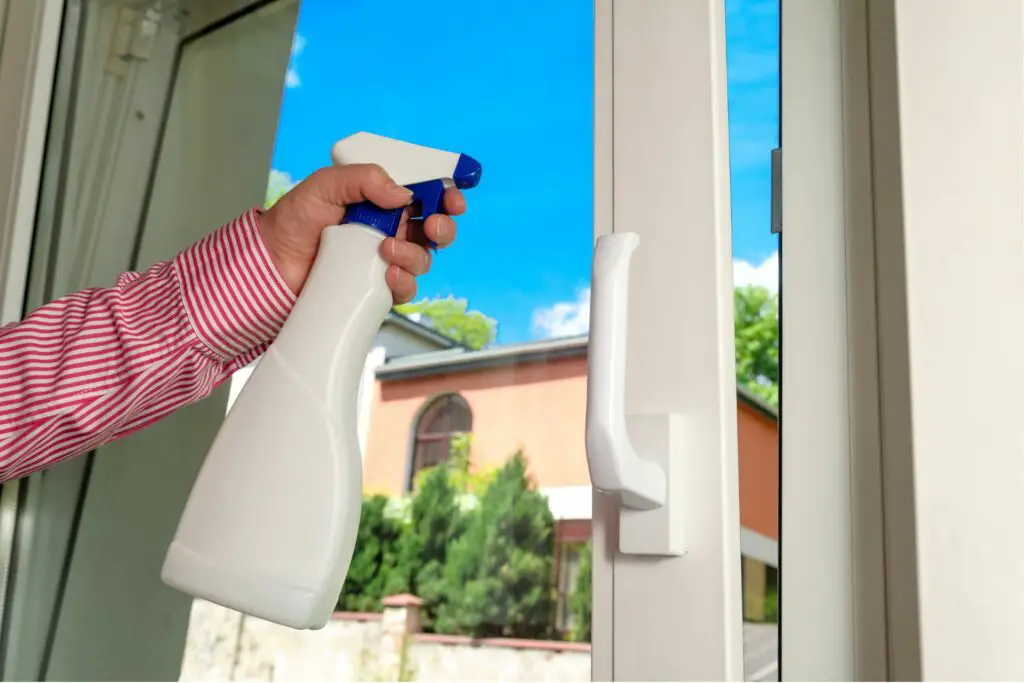
- Choose the Right Cleaner: Use a mild soap solution or a specific vinyl window cleaner. Avoid abrasive, acidic, or ammonia-based cleaners as they can damage the vinyl.
- Optimal Cleaning Conditions: Clean on a cloudy day or in the shade to prevent streaks caused by the cleaner drying too quickly.
- Proper Cleaning Tools: Use a soft, lint-free cloth or a microfiber cloth for cleaning. Avoid rough materials that can scratch the vinyl.
- Thorough Cleaning Process: Wash both the inside and outside of the windows, ensuring all areas are covered. Rinse thoroughly to avoid leaving any residue.
- Drying: After rinsing, dry the windows with a clean, soft cloth to prevent water spots.
How to Clean Mold Off Window Sills

- Preparation: Wear protective gear like gloves, a mask, and goggles.
- Cleaning Solutions: Use white vinegar, hydrogen peroxide, or bleach diluted with water. For a natural option, mix tea tree oil with water.
- Application: Spray the chosen solution directly on the mold, let it sit for 10-15 minutes, then scrub it off.
- Rinse and Dry: After scrubbing, rinse the area with water and dry with a clean cloth.
- Repeat if Necessary: Continue cleaning until all mold is removed.
Painting and Reglazing
How to Paint Glass Windows
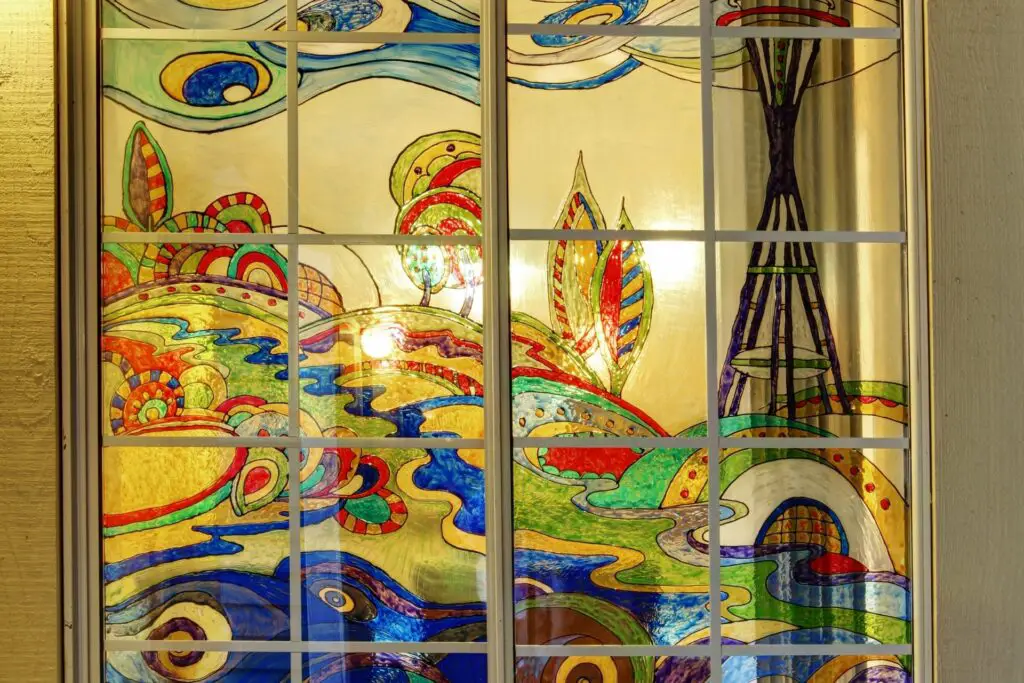
- Prepare Your Materials: Gather acrylic paint, a variety of brushes, a palette, and glass cleaner.
- Clean the Glass: Ensure the window is free from dust and debris using glass cleaner.
- Design Your Artwork: Sketch your design on paper and then trace it onto the glass using a washable marker.
- Paint the Window: Apply acrylic paint according to your design, allowing each layer to dry before proceeding.
- Seal the Paint: Once the paint is dry, seal it with a clear coat to protect your artwork.
How to Reglaze a Window
- Tools and Materials: Prepare a putty knife, paint scraper, heat gun, glazing compound, and glazing points.
- Remove Old Glazing: Use the tools to remove all old glazing from the window frame.
- Insert New Glass: Carefully place the new glass into the frame, securing it with glazing points.
- Apply Glazing Compound: Seal the edges around the glass with fresh glazing compound, smoothing it out evenly.
- Optional Painting: Once dry, paint the glazing to match the window frame for a finished look.
How to Remove Window Tint
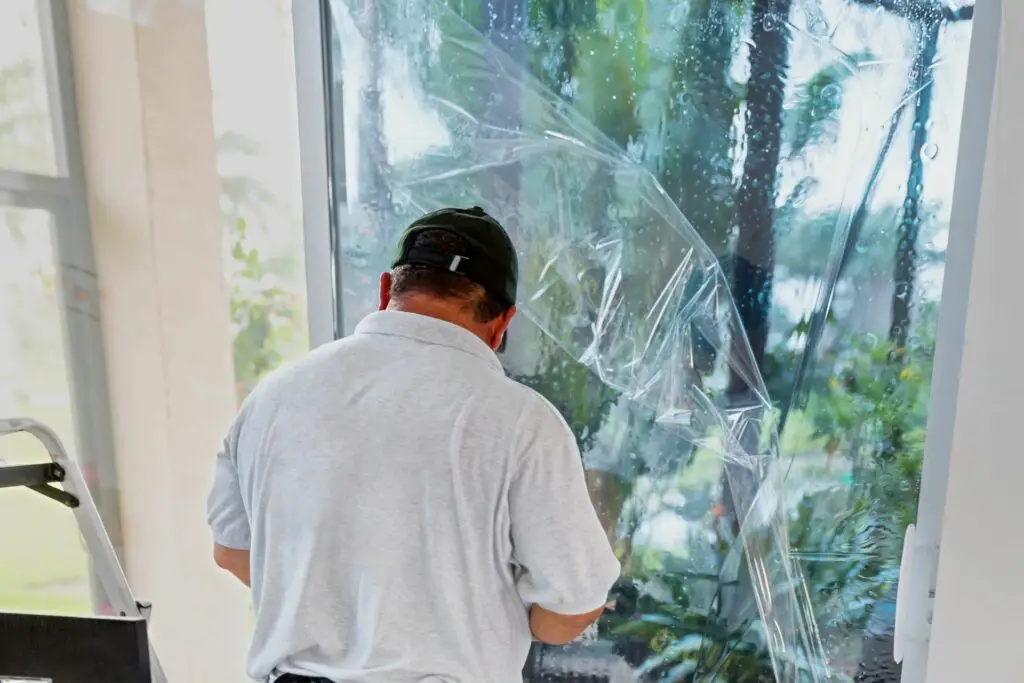
- Prepare the Area: Lay a plastic garbage bag under the window and protect the surrounding areas with paper towels.
- Soften the Adhesive: Use a heat gun or hair dryer to warm the tint, making the adhesive easier to remove.
- Peel Off the Tint: Start at a corner and gently peel the tint away using a plastic scraper or a credit card.
- Remove Adhesive Residue: Apply an ammonia-based cleaner to any remaining adhesive, then scrape it off carefully.
- Clean the Window: Wipe down the window with glass cleaner to remove any residue.
Seasonal Maintenance Tips for Windows
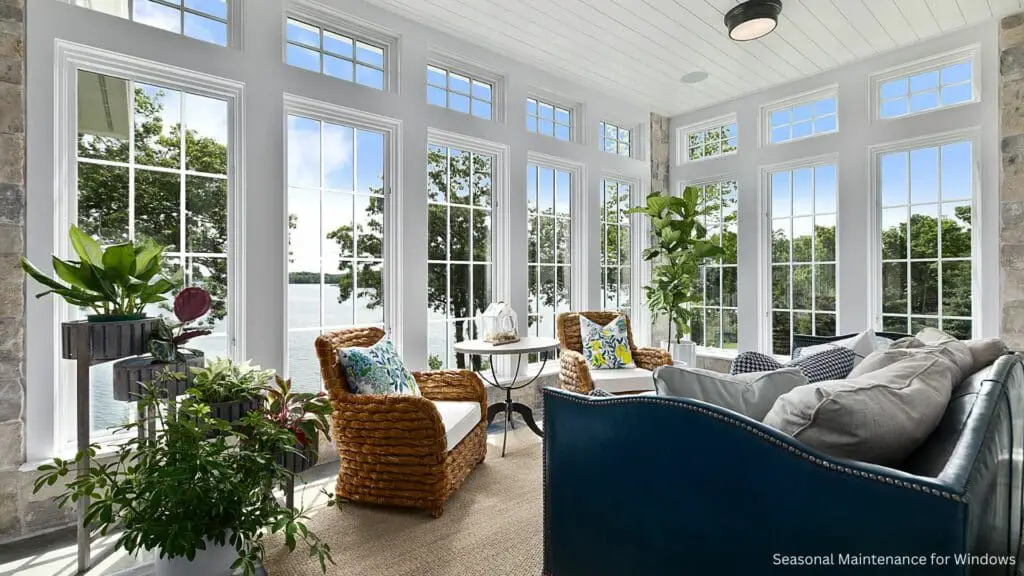
- Inspect and Clean: Check for and clean any debris from the window tracks and sills to ensure smooth operation and prevent water buildup.
- Check Seals: Inspect the seals around your windows for any cracks or gaps and reseal them to prevent drafts and moisture entry.
- Storm Windows: Install storm windows if you live in a region with harsh winters for added insulation.
- Glass Inspection: Look for any signs of cracks or breakage and replace the glass if necessary.
- Lubricate Moving Parts: Apply a silicone-based lubricant to any moving parts like hinges or tracks to prevent sticking.
- Weatherstripping: Replace worn weatherstripping to maintain energy efficiency and comfort.
Frequently Asked Questions
Which type of windows is best for home?
Double-pane windows with low-E coatings are popular for their energy efficiency and noise reduction.
Related posts:
What is the most common type of window?
Double-hung windows are the most common in residential buildings, known for their traditional appearance and the ability to open from both the top and bottom.
Related posts:
What maintenance do windows need?
Window maintenance includes regular cleaning, checking for drafts, ensuring seals and weatherstripping are intact, and occasionally repainting or sealing wooden frames to protect against weather damage.
Related posts:
How do you take care of windows?
Taking care of windows involves regular cleaning, promptly repairing any cracks or breaks, checking for leaks or drafts, and replacing sealing components as necessary to maintain their efficiency and appearance.
Related posts:
Can windows improve indoor air quality?
Yes, windows that provide good ventilation can significantly improve indoor air quality by allowing fresh air to enter and stale air to exit, reducing pollutants and humidity inside the home.
Related posts:
What are the best windows for soundproofing?
For soundproofing, windows with double or triple glazing and specialized acoustic seals are most effective. These types of windows can significantly reduce external noise, making them ideal for homes in noisy areas.
Related posts:
How often should windows be replaced?
Windows typically need to be replaced every 15 to 20 years, depending on the material and environmental conditions. However, windows that are well-maintained may last longer.
Related posts:
What should I consider when choosing windows for a coastal home?
For coastal homes, it’s important to choose windows that are resistant to saltwater corrosion and strong winds. Materials like vinyl or treated wood and features like impact-resistant glass are recommended.
Related posts:
What is the difference between retrofitting and replacing windows?
Retrofitting involves adding or replacing elements of the window to improve performance without removing the entire window frame, whereas replacing a window includes removing the existing window and installing a new one, which can involve more extensive work and greater cost.
Related posts:
Are there eco-friendly window materials?
Yes, materials like wood from sustainably managed forests, recycled aluminum or vinyl, and fiberglass are considered eco-friendly options for window frames due to their durability, recyclability, and energy-efficient properties.
Related posts:
What is the benefit of tinted windows?
Tinted windows reduce glare and block harmful UV rays, which can fade furniture and floors. They also help in reducing heat gain during summer months, enhancing comfort and reducing cooling costs.
